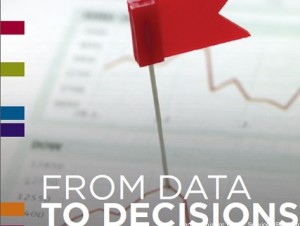Using data to make decisions is vitally important to the survival of associations in the rapidly evolving technological age we live in. The pace of change is increasing exponentially – this means we have more decisions to make yet less time to make them. Using data to make decisions lowers the risk of making a bad one. Our clients understand that data analytics (also called Business Intelligence or BI) is not a “nice to have” initiative. It is in fact the very way they remain successful in advancing their mission, adding value to their members and other stakeholders and ensuring that they thrive financially, even in an uncertain environment. Data analytics is also used to identify new revenue sources as well as low-performing events and products.
Developing a business case is the best way to ensure the success of a BI initiative. We believe a good way start is to identify the “cost of the current situation”. In other words, how much does not using data to make decisions cost your association? In those areas where you are using data to make decisions, how much is it costing you to extract that data? Be sure to consider staff time, as well as the risk of relying any any reports where the data is manually manipulated. Time and time again we meet with clients who are manually creating reports for their Board. Often this is a 1-2 day process (sometimes longer), which involves a staff person manipulating data manually. Not only is this inefficient, but it is dangerous. What happens if that person gets sick or leaves the association? What happens to your credibility with the Board when that person accidentally makes an error? When we calculate the cost of the way we are currently extracting data and add to that the cost of making a poor decision because we don’t have access to data, it is very easy to quickly see the value in a data analytics program.
Another hidden “cost” is the amount of time it takes to understand the story the data is telling. Studies have shown that the human brain can understand images 3x faster than text. We believe data analytics should be presented visually, and in an interactive way. In other words, dashboards that allow the business user to have a “conversation with the data” and ask new questions on the fly without going back to IT for another report or data dump. Visual data analytics are much easier to understand than tables of numbers and enable us to quickly understand the story the data is telling and move on to the most important question of all, “what should we do about it?” If it’s a good story – what is making it good and how can we do more of that?

- Identifying “At Risk” members far in advance and increasing their engagement to be sure they renew (save money by increasing retention)
- Identifying “Optimal” members – profiling optimal members by category and locating external data sources that match these profiles (add revenue from new members)
- Identifying new products and services – determining demand, creating and targeting products and services to the appropriate audiences (add revenue and save money)
Using data to make decisions helps mitigate the risk of making a poor decision and the cost of not using data outweighs the cost of an analytics initiative. To justify the cost of an data analytics initiative, start by determining the cost of the current situation. See our previous post on this topic, “How Much Does an Association Business Intelligence Project Cost?”



